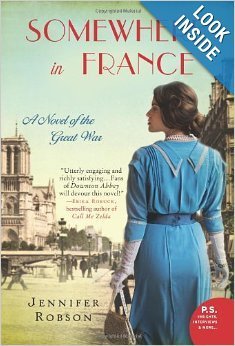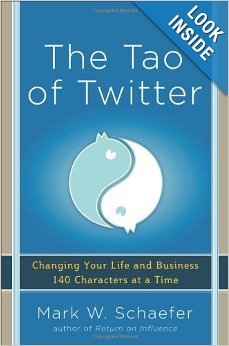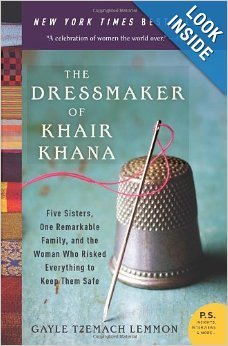Rochelle Campbell's Blog: The NoteBook Blogairy, page 24
March 1, 2014
9 Tips Where & How to Query to Literary Agents
This is a great post about Literary Agents and how to navigate trying to obtain one.
 Originally posted on Savvy Writers & e-Books online:
Originally posted on Savvy Writers & e-Books online:
.

.
A typical literary agency receives close to 5,000 unsolicited query letters/book proposals per year – or approx. 150 per working day. On average these agents accept only 10-12 new clients – only one out of every 500 submissions… Do you want to learn how to write a query, and how to approach the agent?
Do you want to get to know more about the person before hand – after all, she or he will be your partner for a long time? My best advice: Read their blogs to get informed about the process and find out more about how they work and what they are like before you approach them. And have a “business plan” for your book ready: Who will be your readers, who is your competition and how will you market your book. You will be asked for this! Here are some examples of questions you might be asked.
.


February 22, 2014
Book Review: Somewhere in France by Jennifer Robson

This is my second attempt at writing a review of this book. I scrapped the first one entirely as I was rambling on at length for no apparent reason other than my absolute adoration of this book.
Lady Elizabeth Ashford (who has several other monikers but I’ll keep it short here) is a modern-day woman trapped in a genteel family where her talents are not recognized nor nurtured. Her parents actively insist that her role in life is to marry well, have children and raise them to the standards set by her family for generations. Her parents have several homes across Europe including a townhouse (read mansion) in London and a summer home in Cumbria. To most of us, Lady Elizabeth, has it all. She is of a different opinion.
WWII is just about to start and there are rumors of war. Lady Elizabeth — Lilly to her closest friends — wants to pitch in and help with the war effort. Her parents refuse. Lilly was not allowed to go to University. She was not allowed to work. She was only allowed a governess/tutor who gave her rigorous lessons only after she was encouraged by her brother’s friend, Robert Fraser, when he came to visit with her brother Edward one summer when Lilly was 13. That one push from Robert set the tone for Lilly and she made fast friends with Charlotte, the governess/tutor finally hired.
We’ll fast-forward several years and Lilly is now in her early 20′s. She’s been presented to the public for only one season and garnered no attention; the season was a flop for her. Her parents were devastated. But Lilly? She was nonplussed. She now had her time to herself albeit a lonely existence she did not have to follow in her mother’s boring footsteps.
Her mother drags her to a ball and there she meets up again with Robert Fraser who is immediately enamored of the little girl with freckles who has now matured. He tells her she can do anything she puts her mind to and encourages her to follow her heart and find meaningful work. Shortly after speaking with her, Lilly notices that her mother has cornered Robert and has a stern look on her face as she speaks to him. Of course, no good could come of this. When Lilly seeks Robert out later that evening he has gone and her brother tells her he bade her goodnight through him.
She decides shortly afterward that she needs a break and goes to live in their country home while her parents are in London. She learns to drive all manner of vehicles from one of the servants and feels accomplished and ready. She finally had a skill that would be useful if she could ever get the opportunity.
Long story short, Lilly is called back to London. Her family found out from the vicar that she has been learning how to drive. She has a verbal tussle with her parents and they order her to follow their rules, or else. Lilly goes for the ‘or, else’ option and moves in with her governess/tutor, Charlotte. From that point on, all of Lilly’s wealth and privilege mean nothing. She eschews it all and gets a job as a ‘clippie’; a person who clips bus tickets.
The pay is menial but she knows she’s distantly helping the war effort because the men who used to do the clippie job are now fighting at the front. During this time, she begins to correspond with Robert Fraser who is now a surgeon with the Army. Through their correspondence, he encourages her to do more — as she’s always dreamed. She finds out about a new organization of women that will help close to the front lines.
She applies as a driver and is accepted. And, of course, eventually she gets shipped to the very base that her darling Robert — Robbie — is stationed. There, a love story that is both a war tale and a moving love story, begins to unfold.
It is not the most swiftly unfolding book but it is a wonderful historic read that paints in all of the detail of the time and provides a wonderful scenic background to this war love story. I highly recommend this book to history buffs and historical romance fans.
5 Blogairy Notebooks


February 20, 2014
S.M.A.R.T. Goals in Writing
I’ve been curious about writing goals. The same way that people set New Year’s resolutions, writers set goals for themselves. Maybe not on January 1, but writers and other creatives have goals (usually). So, is a goal S.M.A.R.T.? Whatever do you mean by that? You may ask. I did a bit of searching and found that the University of Virginia has a guideline that details what S.M.A.R.T. writing is. Their definition is, as follows:
Specific – Goals should be simplistically written and clearly define what you’re going to do
Measurable – Goal should be measurable so that you know when you’ve achieved the goal
Achievable – Goals should be achievable; they should challenge and stretch you but defined well enough that you can achieve them
Results-focused – Goals should measure outcomes; not activities
Time-bound – Goals should be linked to a time frame to provide urgency
Okay, now that we know what smart writing is all about do we, as writers and creatives, indulge in such scholarly madness? The short answer? Some do. Some don’t.
If you do a quick search about smart writing, you’ll find a middle grade book, an app, as well as a great website by Laura Robb relating to her book — The Smart Writing Handbook.
This begs the question, can there be D.U.M.B. writing? Well, since this is not politically correct any longer (except for the For Dummies book series…), the only thing I see in a quick search on dumb writing is a book called 303 Dumb Spelling Mistakes and What You Can Do About Them. This book was written in 1989 so dumbness in the title wasn’t offensive. (It still mustn’t because it was 135,766 in the Amazon sales rank at the time of this article’s penning.)
Okay, so we don’t need a book about dumb writing as we know what that is intuitively. When we see dumb writing we know it. But, can you see and know smart writing when you read it? Is it that clear, specific and definable? Does smartness depend upon genre, the POV of the story, if the story’s in first-person (or, second person)? Well, yes and no.
Smart writing is not definable in a quantifiable way. Smart writing is relevant to the time the piece is written. It takes into account the age and maturity of the writer and the subject matter. Smart writing can be literary, genre fiction, or take a poetic form. Smart writing is a concept moreso than an actual “goal”, in my humble opinion. The very fact that there is talk in the world of smart writing can be frustrating, academic, and can induce writer’s block if one dwells on having a well-received “smart” book for those in the know to discuss discreetly over cocktails at a book signing or gathering.
Blogger Dean Rieck has it right when he states, “To sound smart, you must stop trying to sound smart. Brilliant writing is simple writing, a relevant idea delivered clearly, and directly.” Sounds pretty smart to me. To read Dean’s full article, click here. [Dean's got a quote in there about an editing tip from Mark Twain - hee-larious!]
Okay, I’ll stop the charade now. Dean writes copy; he’s a freelancer. His blog is called copyblogger. So, his advice is about a specific type of writing. Granted, creatives can put many of the ideas in his article to great use in their works-in-progress but they don’t need to drink the Kool-Aid.
The point is, there is no point to this post. Smart writing is something that creative writers should not focus on — period. This will stymie their attempts at getting the first-draft completed. One should focus on being smart in the sense that you set a goal to work on your work-in-progress on a regular (daily/weekly) basis. That’s smart. A writer…writes. This is the only smart thing we writers need to know.


February 12, 2014
Book Review: The Tao of Twitter by Mark W. Schaefer
Marketing guru, Mark W. Schaefer, has turned his traditional business marketing ingenuity to the Twitter platform. Twitter, for those of us we prefer to shelter under rocks, is the social media giant that uses only 140 characters per “tweet”. A tweet is the manner through which its users send messages to other users.

Even Mark with his years of marketing expertise wasn’t sure what to make of Twitter and its business potential. “Like most people, I thought [Twitter] was just about the stupidest thing I had ever tried…” But then, while playing around on Twitter, Mark came across hashtag “NewFluName” and followed this trending topic.
The hashtag (#) is a way that Twitter identifies key search terms that the user (aka: tweep) inputs. Once you put the “#” in front of a word, or a phrase, people who type in that word, or phrase, can find all instances of that search term across Twitter. #NewFluName was a conversation a few years ago when the pork industry was experiencing an outbreak of swine flu. This topic was trending (read: was very popular and lots of people were following this conversation via the hashtag). The pork industry execs were seeking a new name for this outbreak of flu. Some of the flu names that Mark read were:
The Aporkalypse
Porky’s Revenge
This little piggy went to the bathroom
Hog Flashes
Mad Sow Disease
Hamthrax
While this real-time conversation was hilarious, it also showed Mark the power of Twitter. Here was a “global brainstorming session” in action.
“It was an awesome moment, an inspiring moment. I began to think about all of the implications for business, for networking, for solving problems, for learning…and for me. People sharing, connecting, teaching and entertaining each other in the moment — from every corner of the world. I had caught a glimpse of something profound and wonderful” (excerpted from page 2 – 3 of The Tao of Twitter).
Reading about Mark’s Twitter journey is nothing short of inspiring. He has gained a deep knowledge of Twitter and how it functions. He shares powerful anecdotes of how Twitter has positively affected his life and his business. Granted, he was a marketing professional prior to Twitter so one could say he was predisposed to have a positive successful outcome.
I say, I’m not so sure to the above supposition. Why? Because traditional marketing experience did not help Mark on Twitter. His first major Twitter connection came about when he sent out a tweet about the Steelers. A woman responded to his tweet ad they started tweeting each other and reading one another’s blog posts.
That singular tweet was the beginning of building trust and confidence between these two people — tweets. It was the relationship that spawned business connections. Mark took a cold online connection and made it warm. Once that was done, he met this new friend offline and in person.
You can say that Mark was “predisposed” to do well on Twitter, however he first had to understand this particular social media platform which is unlike any other social media platform out there today.
The Tao of Twitter shares Mark Schaefer’s journey through his various experiences while learning all there is to know about the platform. More importantly, this book shares some key resources (free resources!) that readers (people like you and me) can put to use his insights, hard-won information and tips. Mark also shares useful Twitter tips and proper Twitter protocols for RTs (re-tweets) as well as the philosophy behind successful Twitter users.
The Tao of Twitter is a quick read that will guide you towards a greater appreciation of this social media platform. If you can find no appreciation for this sleeping giant of a platform, you will definitely come away with a clearer picture of Twitter’s capabilities as well as best practices to build a more targeted sales.
4 1/2 Blogairy Notebooks


February 2, 2014
Book Review: The Dressmaker of Khair Khana

Kamila Jan of Kabul, Afghanistan was a young woman besieged with responsibilities beyond her years. In her late teens, her hometown of Kabul was taken over by the Taliban. Within a couple of weeks, Kamila and all of the women in Kabul went from a relatively liberal mode of dress to having to wear a chadri when they were in public. A chadri is a garment that covers a woman completely from head to foot with only a small window with a veil covering their eyes so they could see…a little bit.
No matter how hot it became, the chadri was necessary to wear. The consequence was being beaten with wooden batons, or even worse, being jailed indefinitely with a hope that one’s family was rich enough to bail you out through bribes.
Kamila Jan’s story shares with the reader how woman of Kabul were able to get through the repressive Taliban years while somehow managing the risks. It is also a story of enterprise and business. This story shows how women began businesses in their homes to sustain themselves and their families. The one important note that I left out is that the Taliban government banned women from working publicly (outside of their homes). Women were also not allowed to go to school and if they were enrolled when the Taliban came to power, they had to stop attending, or face unthinkable consequences.
Simply walking in the streets without a chadri on and wearing a large body covering scarf was still a punishable offense. Women who did not have the time, or money, to purchase a chadri within the couple of weeks that the new ruling went into effect became targets for the Talib soldiers who patrolled the street of Kabul. A woman could even be detained if the soldiers were so moved.
Women coming together, laughing and playing music was also banned. As were most forms of entertainment. Can you imagine not being able to play music, board games, or have loud fun in you own home? How about not being able to speak with the butcher, if he was male, in order to place your order? That’s right. If a woman was caught speaking to a male that was not in her family, that was against the law! A woman had to have a mahram (male escort that was a family member) with her at all times. This was considered proper decorum for a good Muslim woman during the Taliban years.
These are a few of the most glaring and ridiculously austere restrictions the Taliban government imposed upon Afghanistan during its 5-year reign. The Dressmaker of Khair Khana by Gayle Lemmon is a challenging read as it draws the reader’s emotions close to the surface because of the injustices experienced by Kamila Jan and her family. However, the strength of Kamila and her family is jewel-bright and will inspire you long after the final word is read.
5 Blogairy Notebooks


January 30, 2014
This is What Happens When You Walk for 20 minutes in 16 Degree Weather…
Started reading Julia Cameron’s Vein of Gold about a week or so ago. At first, I thought it was going to be one big fabulous ride of writerly creativity and fun. Hmm. Not so much.
Vein of Gold spells out that the journey one is about to undertake is actually a pilgrimage and that it will take at least 4 months to complete the journey. Initially, I was put off by the amount of time being asked of me but the insightful quotes that framed each page kept me motivated and excited.
The first exercise — morning pages — also proved to be very thought-provoking. Several things popped up in these 3 pages of Gestalt-ish writing each day. I understood for the first time in many years that my Grandmother and Mother played roles in my life that I had not fully realized. Yes, they are my mother figures but there were issues that I attributed to other things layered in with the normal ‘mother’ stuff. This surprised me and made me buy into the idea of Morning Pages even more. I also continued reading.
The next exercise is the Artist Date. Each week one is supposed to take oneself in hand — alone — and go someplace or do something that is interesting, you’ve always wanted to do, have never done before, etc. Why? So that you begin filling up your idea reservoir with new ideas, images, thoughts and experiences to draw upon when you’re writing. Sure you can go to museums, but thrift shops, vintage clothing/furniture stores and bowling alleys are A-ok, too!
Next up are the walks — the daily 20-minute minimum walk and the weekly hour-long walk. I’m on the East Coast and currently we’re experiencing some really chilly weather (16 degrees and lower!). Walking was not the thing I wanted to hear about especially with a young baby (my daughter’s not yet 6 months old). But, yeah. I tried it — the short walk! We bundled up and walked the short distance from the babysitter home. Chilly yes, but invigorating. No major thoughts or revelations occurred on the two or three short walks I’ve done but I did feel a sense of achievement. I set out to do something for my writing self and I did it.
So, I continued reading. I got to the section on Narrative Time Lines and became mired in muck. I SOOO did not want to do this — still don’t. I know I will but going through each year of one’s life in 5-year increments asking oneself to recall things liked, hated, smells we missed, and the like is enough to make me want to hurl. However, Cameron feels this is integral to the success of freeing our inner writer/child so that we can release the emotion/pain/writer’s block that may be holding us back from realizing true success.
Sounds good. Still don’t want to do it.
That’s where I am. I’ll check out more of Cameron’s videos and try to gain an understanding of what I’m to do and see if I’ve missed something. Anyone out there who has done Artist’s Way, or Vein of Gold please feel free to share your insights into this particular tool. Your input would be much appreciated!
Ta-ta for now,
The NoteBook Blogairy


December 12, 2013
Twelve Days Before Christmas…
And everyone’s scurrying to find the most perfect Christmas and holidays gifts ever! The condos are warm, the houses are drafty but under each tree it’s all cozy as the glitz and glam of tinsel and snitzel twinkle and winkle.
I’m not different. I’m clicking and shopping from my chair or couch as my little one’s a wee babe and in need of no shoving — the stores are fine but my living room’s dandy!
But I do have one wish, that’s all, for this holiday season. And that wish is that you have the bestest holiday ever and you receive everything you’ve ever dreamed of. This way, maybe just maybe all through your Christmas Eve night, not even one thought of sneak-opening your gifts will dance through your head.
Happy Holidays from The NoteBook Blogairy!!


December 5, 2013
What I Didn’t Want for Christmas…
Today I found out that I have celiac disease. It’s an autoimmune disease that also affects one’s digestive system. Eating gluten (wheat, rye, barley) damages my small intestine. I’m a bit numb because I figured this out before my doctors did. I’ve been experimenting with different types of foods thinking that it was something I was eating that was causing me to have unbearably severe allergies all year round.
I found that eating a diet that is almost strictly Paleo worked well. Paleo diets don’t include wheat or processed foods. When I eat ground foods (platains, yams, batata, yucca, etc.), meat, veggies, salad, nuts and legumes I’m fine. When I throw in Dunkin’ Donuts? Not so much.
My main issue was nasal polyps. They became swollen and then infected and pretty much quarterly I had to take steroids and antibiotics to ‘heal’ up. Then, a few months later I’d have to do it all over again. This went on for over 7 years. Not fun whatsoever.
Today marks the end of all of that. I know it’s not in my head. It’s an actual dis-ease in my body. I have to learn to enjoy foods that my body can assimilate well. It took almost this entire year to come to terms with the fact that eating gluten makes me sick — literally! 
So, I’ve said good-bye to cookies, cakes, pies, bread, and Twizzlers. Yeah, Twizzlers have flour in them! Ugh, right??
The writer in me is itching to write more about this celiac lifestyle and the person in me wants to run in the other direction with a Crumbs Apple Crumb cupcake in hand.
If I said I’m okay with this I’d be lying. I will be okay. I have accepted it but I’m not yet at complete peace with it. I hope the tests are wrong but I know they’re not. Thank Goodness it’s not life-threatening.
So, to all my fellow celiac sufferers I wish you a festive and joyous gluten-free holiday season!


December 2, 2013
Writerly Success: What Does It Look Like to You?
November 21, 2013
Writing Zombie No More: NaNoWriMo, Take 2
The NoteBook Blogairy
Making you smile one blog post at a time!
- Rochelle Campbell's profile
- 162 followers











